In: Canadian

Barry Smith | What’s Your Stance? | 2024
June 29, 2024Barry Smith | What’s Your Stance? | 2024
Barry Smith’s exhibition What’s Your Stance? was on view at Mahtay Café & Lounge in downtown St. Catharines for the majority of the month of May 2024 and into early June. Smith’s exhibition was the 18th in my continuing series of shows in the space platforming visual artists of the Niagara Region that is soon to mark two years.
Smith is not – on social media or in life – shy about his own ‘stance’ and his own political views. I’ve known him for most of my time in Niagara, and the exhibition is a series of images of photographers taking photos that Smith has captured in the act. There’s a voyeurism to the work, but the nature of the installation in the downtown St. Catharines space also allows play and interaction between the ‘characters’ as they seem to be taking pictures of each other, or are looking at people and events unknown and unseen to us.
Smith’s statement : Everyone has their opinions. Whether it be in the social, political or religious sphere. Some are based on fact, some on faith, and some are emotional due to personal experiences, education and (sadly) social media.
We all have a point of view. Some are balanced, conservative or outright risky.
I see this in the way people take photographs. Some are amateurs, some hobbyists and others are professional – but everyone has their own stance.
What’s your stance?
To say we live in a time when contention and division between peoples’ respective stances is intense is an understatement. Smith, for example, is a vocal advocate for Palestine and against the ongoing genocide perpetuated by the state of Israel and her enablers on the international scene. In our shared community – and many, many others – this is a ‘stance’ many of us see as being a default one, while others choose to stand somewhere else….
I often see things – I choose to stand, in my interpretation – through the lens of the art world, both in Canada (that imaginary nation we live in) and the larger international discourses within that sphere.
With the current situation in the Middle East, fractures – splits that expose or exacerbate hypocrisy – are becoming harder to deny. The termination of Wanda Nanibush from her position at the AGO, for example, spearheaded by someone who will allude to how art should have a social conscience and challenge us, but ‘just not that way’, or more exactly NOT in a way they ‘disagree’ with is a fine example.
I’d offer another : as many of you know, I spent nearly two decades in Saskatchewan, a place rife with racism regarding Indigenous and Settler relations. I was deeply amused – and not surprised at all – at the hypocrisy of someone I had the lamentable experience to work with in the ARC spaces publishing an article with Galleries West, decrying what he saw as ‘rising antisemitism’ in the international art world. This same person was instrumental in attempting to silence and blackball me when I published numerous factual articles about the institutional racism at his employer, the University of Saskatchewan, and I thought when I saw his blinkered whining that perhaps he had begun to see that dehumanizing others is not something that can be contained to one space, and bleeds into others, especially when you legitimize it for your own ideology, thinking it is ‘unique.’
Recently I read an engaging article from ArtForum about the rise in protests in museums and in gallery spaces and the writer – Charlotte Kent – offered a number of ideas and writers that I’ve been researching since I read the piece about how cultural spaces are stakeholders and often consistent – if not eager – manufacturers of alibis for the status quo, whether that status quo be that only one ‘type’ of art is ‘actually art’ or that some people and ideas are simply a denkverbot (to paraphrase Žižek) : of them, ‘we’ are ‘prohibited to speak.’
But, as Kent asserts ‘Museums [and by extension what fills them, as art] have never not been political.’
…I suspect I told you more about ‘my stance’ with that tangential response to Smith’s work than about his work, but I also suspect Smith would be comfortable with that, in that I ‘answered’ his question.
Born in Scotland and raised in Niagara, Barry Smith has always had a flair for humour and wit which he often employs in the titles of his photographs and his compositions. A self taught photographer, Smith has found his own unique photographic style and approach, concerned with using natural light. Smith’s photographs come to life like a fresh painting on canvas.
A past St. Catharines Art Award nominee, Smith’s pictures can be found on display throughout Niagara at various art shows and galleries.
What’s Your Stance? A Selection of Photographs by Barry Smith was on view at Mahtay Café & Lounge in downtown St. Catharines in the Spring of 2024.
You can see more of his work at his IG here.
~ Bart Gazzola
Read More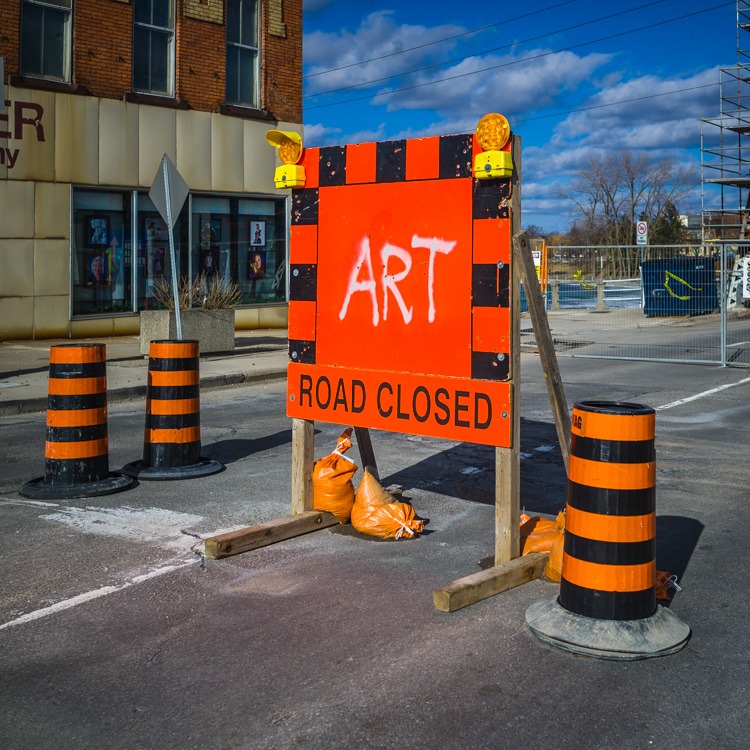
Sandy Fairbairn | ART, Road Closed | Welland, April 5 2014
January 19, 2024Sandy Fairbairn | ART, Road Closed | Welland, April 5 2014
Four years ago, just as Covid – 19 was beginning to move across the world, an exhibition of Sandy Fairbain‘s artworks that I curated at AIH Studios in Welland opened. These selections from the photographer’s extensive archive were focused upon the city of Welland and were collectively titled Welland : Times Present Times Past. Originally planned to run from February 15th to March 15th 2020, lockdowns and access became an issue, but I take joy in a local writer describing it as one of the most important exhibitions in that city, of the decade. There were also works that acknowledged the major role that Welland played in the history of labour rights in Canada, that were more sculptural, but that’s a story for another time (or seek out the book Union Power : Struggle and Solidarity in Niagara that is a fine history of the space, before we acquiesced to the ‘dogma’ of ‘trickle down economics’ and the liars Mulroney, Thatcher and Reagan, ahem).
This image was one of the more unique ones in that show, differing formally from Fairbairn’s usual straight on shots of buildings and edifices, reminiscent of ‘mug shot architecture’, if you will. But perhaps it might be better described as ‘morgue’ photos, as when we hung the show there were many captures of the same space, from decade to decade, and many times the sites were now demolished and empty….
I must add that as COVID took hold, I was in Welland for a longer time than I had planned to be there, with Fairbairn’s exhibition, and with the vagaries of lockdown I got to know the city late at night or early in the morning, a sense of itself that is not the ‘official’ kind.
Conceptually, this image offers both amusement and cynicism simultaneously. As someone who is soon to mark a decade of being part of the cultural community of Niagara, I could also add that it has resonance in terms of endeavours both planned and aborted, envisioned and stuttered, that have defined [and deformed] the cultural landscape of not just the city of Welland, but the larger Niagara Region.
So like any fine artwork, my interpretation of it changes depending upon when I see it, and the experiences I bring to it, and thus it shifts just as I do (perhaps in tandem, perhaps in opposition). To flip back to a more literal meaning from a conceptual one, my own attitudes about art initiatives within the space of Niagara have also changed, and spurred my decision to feature this work.
One hopes and works to foster artistic and cultural initiatives but finds the road closed, if you will. There are a variety of talks about ‘cultural revitalization plans’ in Niagara, but as this is the space that let a nationally recognized public art gallery go, with barely a whimper and now ignorant celebration of the ’boutique hotel’ that has taken it’s place, I shall reserve my enthusiasm…..but, to offer a positive point as we end, the push to have an Art Gallery of Welland is also moving forward, slowly but surely, and that effort is not without reward. As Sandy Fairbairn grew up in Welland (oh, the stories he’s shared with me, that I enjoy and enlivened some of his images from the aforementioned AIH exhibition), that is a space that might, soon, host more of his photographs like this one.
Not all roads are closed forever.
More of Sandy Fairbairn’s work can be seen here and here.
~ Bart Gazzola
Read More
Ron Tucker | Black and White and Silver and Platinum
September 8, 2023Ron Tucker | Black and White and Silver and Platinum
I’ve overthought this. The downfall of writers in general… arts writers in particular. I got so tied up wanting to write something that would do justice to the work of an amazing photographer who I am absolutely honored to know, that I tied myself in knots and got a serious case of writer’s block. It’s never happened before.
So – I’ll let the work speak for itself, and scribble down a few things I did manage to get out.
Here it goes.
Read More
Robin Claire Fox | Reflections
March 17, 2023Robin Claire Fox | Reflections
Photography is inherently nostalgic. Every image taken is essentially the capturing of a moment from the past. That moment no longer exists, just the memory of it and an analogue print or a digital impression trapped on an electronic device. Many modern photographers harbour longings for the saturated or contrasty renderings of images made with processes and media (like Kodachrome) long out of use or no longer in production. Quite a few of them try to recreate the look and feel of these processes digitally, running their captures through filters and algorithms to bring back the visual past. While many are overdone (why keep it at 3 when you can dial it up to 10?), there are a few who have mastered the ability to make us believe that we are viewing an image taken decades ago. The evocation of this photographic past is (I believe) an effort to physically reconnect with it in a way that seems familiar, safe and warm… like sitting with your family watching slides projections of photos from a vacation taken years ago.
Ancaster, Ontario’s Robin Fox started taking photographs around the time of the birth of her most recent child as a conscious attempt to document her family’s childhoods for her future self to enjoy. She is a natural at capturing the uncertainties alongside the joys of growing up. A huge fan of Saul Leiter’s colour work, she has found a method of perfectly capturing the deep saturation and contrast Leiter exhibited in his work with Kodachrome and other slide films[1] in the 1950’s. Her images seem imbued with palettes that exist only in the memory of childhood, where everything was so much bigger and the world was awash with primary colours.
Read More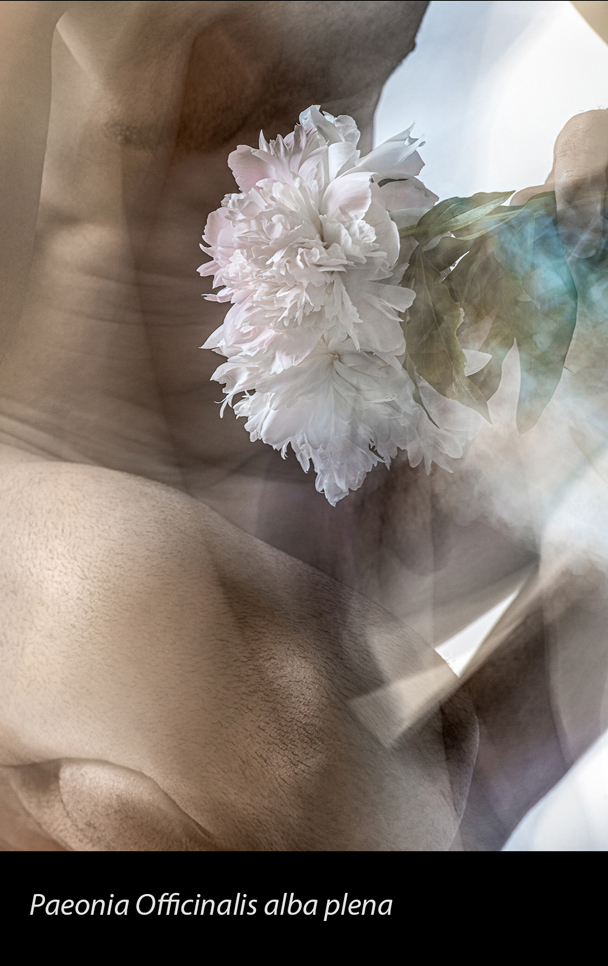
Shelagh Howard
March 16, 2023Shelagh Howard | Paeonia Officinalis alba plena
“Genus/species” is a body of work that explores the invisible, all-encompassing power of names, labels, and language.
In 1735, Carl Linnaeus published “Systema Naturae”; his system for identifying and classifying the natural world, still in use today. Names have power.
To name something is to define it, to acknowledge its existence as unique and separate from any other thing. Language informs people whether they are safe and belong. Or not. Cruel words leave hurts in hidden places, removed from easy healing. Words can stigmatize those who are different, marginalize those who need uplifting, dehumanize populations whose needs are inconvenient to those in power.
In “Genus/species”, in lieu of their names or other descriptors of the model pictured, the images are identified by the taxonomic names of the flowers they hold, harkening back to botanical illustrations and Linnaean classification.
Without the backdrop of easy identifiers or assumptions, this work spotlights the exploration of concepts including, beauty, body image, intimacy, loneliness, vulnerability, isolation, and connection through the expression of human flesh.
Shelagh’s work with the male figure explores the rarely seen perspective of the male nude through a woman’s eyes—one that challenges traditional, toxic masculinity in favour of a viewing experience that is genuine, curious, human and humane.
This deliberate conceit in labeling by the artist forces the viewer to decouple easy assumptions from the earthly flesh on display. There are no quick judgements to be made; only questions that unfold in the liminal space between the seen and the unknown: Should the subjects be named or otherwise identified? Would doing so shift our perceptions? Is it our right and our role to cast their shadows into the light for our own comfort? A picture may be worth a thousand words—or a single name—but who is to say which words are right and true?
~ Rita Godlevskis
Read More
Canada Day ’22 | What We Are | What We Are Not
July 1, 2022Canada Day 2022 What We Are | What We Are Not Bandoliers Details, 2019 Barry Ace I have always been interested... Read More

Different Water
June 22, 2022Different Water A Discussion on Art featuring work by Chrystal Gray and Mayra Perez Whiskey Bottle by Mayra Perez, Mask and... Read More
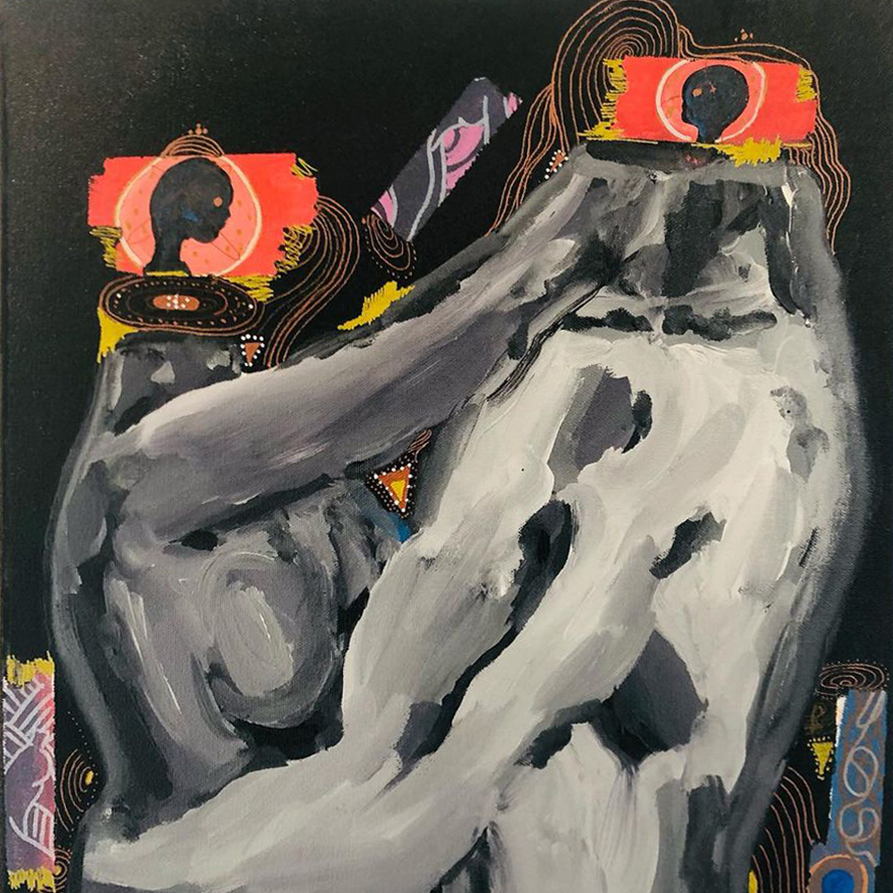
The Chain Links
June 20, 2022Faki Kuano | Sarah Cheon | Ashley Guenette The Chain Links × × curated. by The COVERT Collective is pleased to... Read More
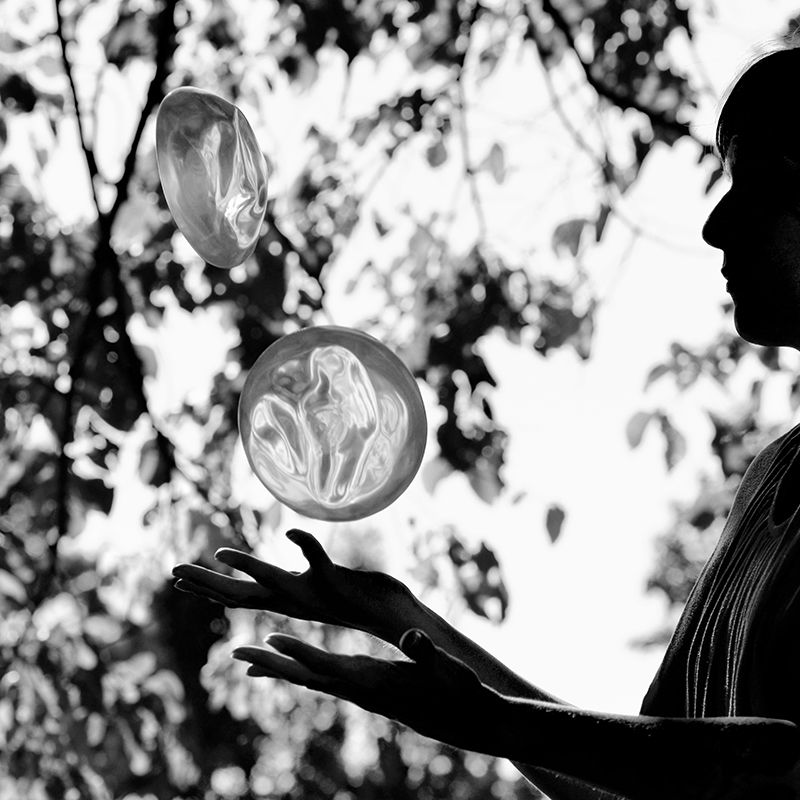
Lana | Transformations by Ruth Dick
June 1, 2022Lana | Transformations Photos by Ruth Dick Lana Series, Before, Image 3 - Photo by Ruth Dick LANA | TRANSFORMATIONS Photos... Read More
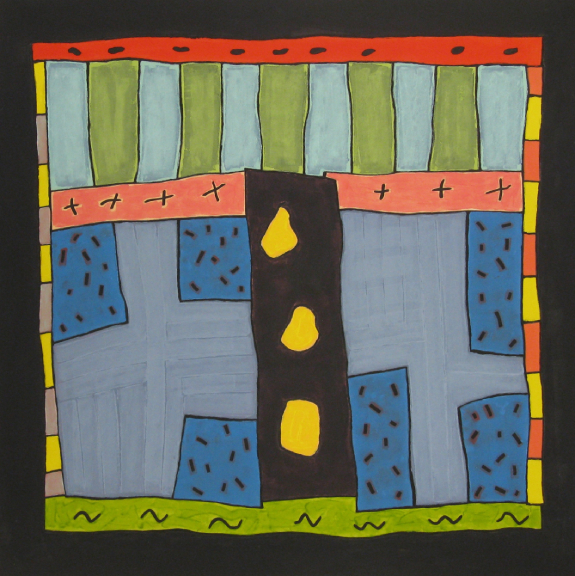
Tony Calzetta – Art Is Hell
April 22, 2022Tony Calzetta Art Is Hell Bart Gazzola sat down to talk with Tony Calzetta, whose decades long practice has been both... Read More
Recent Comments